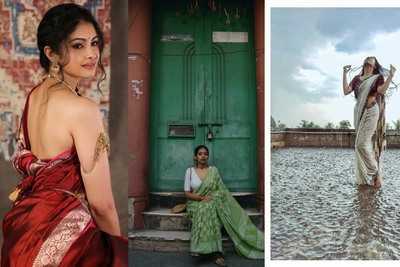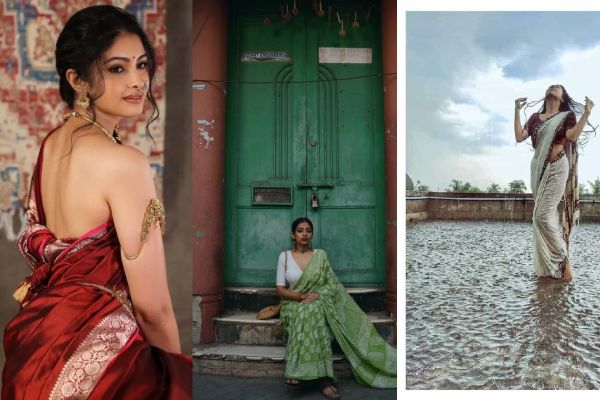

Khadi has always been more than fabric in India—it’s a symbol of freedom, self-reliance, and heritage. Today, in 2025, Khadi is experiencing a renaissance. It’s not just a handwoven fabric for Gandhi-era nostalgia—it’s a modern fashion statement.
From runway collections in Mumbai and Chennai to eco-conscious wardrobes of urban India, Khadi is becoming the ultimate symbol of sustainable and ethical fashion. It’s blending tradition with innovation, making it a top trend in India’s 2025 fashion landscape.
Here’s a deep dive into why Khadi is trending, how it’s being styled, and what to expect in the future of Indian fashion.
1. Why Khadi Fashion Is Trending in 2025 a. Sustainability & Ethical FashionKhadi is naturally eco-friendly — hand-spun, handwoven, and biodegradable. In 2025, sustainable fashion is no longer niche, and Khadi offers authenticity and responsibility in one.
b. Government & Designer SupportKhadi is being championed by fashion designers and initiatives promoting Made in India products, giving it a fresh spotlight.
c. Global RecognitionEco-conscious designers and buyers internationally are exploring Khadi for its texture, versatility, and story.
2. Khadi Fashion Trends in India (2025) a. Khadi Sarees with Minimalist DrapesKhadi sarees are being styled for modern life — minimalistic drapes with solid, pastel shades and contrasting blouses.
Popular among urban professionals.
Perfect for weddings, work, and casual wear.
Khadi kurtis with denim pants, Khadi dresses with sneakers, or Khadi tunics with leggings.
Fusion wear makes Khadi adaptable to everyday wardrobes.
Works well in both metro cities and small towns.
Matching Khadi sets — crop tops and skirts, tunics and trousers — are rising in popularity.
Seen in designer collections showcased in fashion weeks.
Comfortable yet stylish for both casual and semi-formal occasions.
Khadi jackets, blazers, and shrugs are trending as statement pieces.
Perfect for layering over sarees, dresses, or casual outfits.
Bags, scarves, and footwear in Khadi fabric are making waves.
Adds an eco-chic touch to any outfit.
Chennai: Designers creating contemporary office wear in Khadi cotton blends.
Mumbai: Runway Khadi collections mixing luxury with simplicity.
Bengaluru: Fusion wear using Khadi for streetwear collections.
Online Boutiques: Direct-to-consumer Khadi fashion brands gaining traction.
Office Ready: Khadi kurta with cigarette pants + minimal accessories.
Casual Daywear: Khadi tunic + denim jeans + sandals.
Wedding Wear: Khadi saree with metallic zari borders + statement gold jewelry.
Evening Wear: Khadi co-ord set + block heels + clutch bag.
Khadi isn’t just about style—it’s a statement of responsibility.
Low carbon footprint: Hand spinning reduces energy consumption.
Slow fashion: Promotes mindful purchasing instead of fast fashion.
Support for artisans: Buying Khadi sustains thousands of weavers and artisans in India.
These aspects make Khadi a powerful trend in 2025, appealing to environmentally conscious consumers.
6. Future of Khadi Fashion (2025–2030)Tech Integration: AI-assisted weaving patterns and design customization.
Global Expansion: Khadi making inroads into luxury fashion markets abroad.
Collaborations: International designers using Khadi as an eco-luxury fabric.
Cultural Preservation: Khadi as a living heritage fabric promoted globally.
The Khadi fashion trend of 2025 is proof that heritage clothing can be modern, sustainable, and globally relevant. From minimal drapes and fusion wear to co-ord sets and accessories, Khadi is evolving with style and purpose.
In a world increasingly focused on sustainability, Khadi offers the perfect blend of tradition, eco-consciousness, and fashion-forward thinking. It’s not just a fabric—it’s a movement, and 2025 is its defining year.
If your wardrobe doesn’t have a Khadi piece yet, 2025 is the year to embrace this blend of heritage and modern style.
The post Khadi Fashion Trend 2025 India: How Traditional Weaves Are Becoming Modern Statements appeared first on Lifeandtrendz.